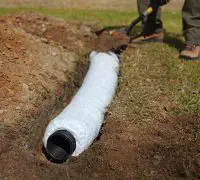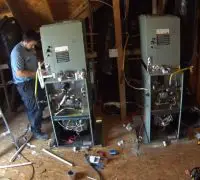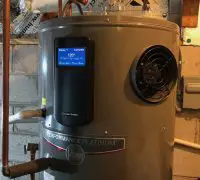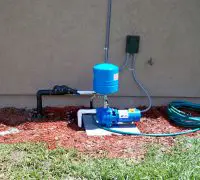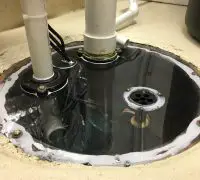Water clogging is not a fun thing to deal with and most of us have dealt with it until now. Debris or material stuck in the line and stopped the water from properly flowing to the drain. A drain pump is necessary for a smooth water flow and to drain the water from inflated tubs and pools. Many daily chores are much easier to manage, thanks to draining pumps and basement sinks.
If you use a basement sink and don’t know how to drain it efficiently, rest assured that you’re not the only one. Many households don’t have the most efficient plumbing, especially when basement sinks. A trapped drain in the floor is a standard solution. However, many basements, whether old or new, don’t have below-floor drainage piping. The answer comes from drain pumps. Installing such a unit will not cost you much, even if you need more than some teflon tape.
Page Table of Contents
What installation options do you have with a utility sink pump?
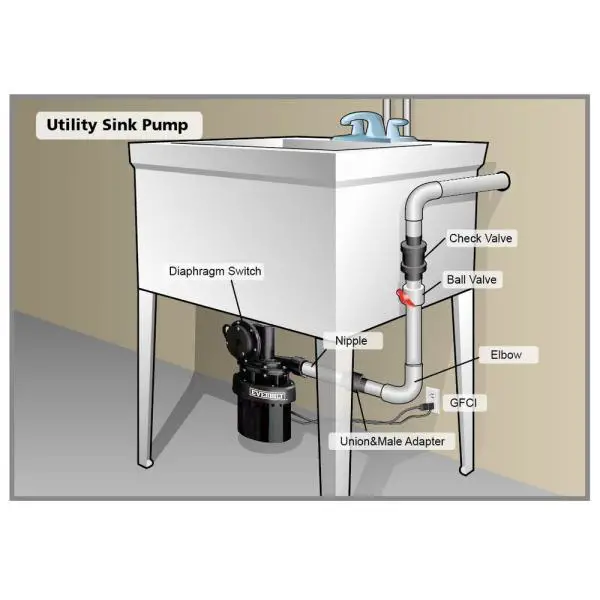
Even if you don’t have any idea about plumbing, you at least know that breaking open the basement floor and setting up a new drain and vent piping is the best solution. However, this sort of draining system isn’t always possible. Another efficient method is to break open a small area of the flooring and install a below-grade sump pit and pump– it works primarily if the sewer exits through the basement wall or the ceiling.
If none of these options are possible with your household, you can install an above-floor sump box and pump specially made for utility sinks.
The equipment you need to install the drain pump
Let’s say that your sink is on the wall opposite the current plumbing stack. It’s not very tricky to bring new waterlines in overhead, but it’s a struggle to have an above-floor drain line.Yyou can use a single laundry tray with a floor-mounted sink and an above-floor sump pump kit. The kit comes equipped with the sump box, the check valve, and a 1/3hp power pump.
To fit the sink, you also need a utility faucet and copper tubing and fittings for the supply lines. DWW plastic pipe and fittings will be necessary for the drain lines. You will find the supplies in plumbing supply stores and home centers.
The plumbing hookups for the drain pump are rather basic, although you need to check out the local plumbing codes. It will be necessary to vent the pump and connect the waste line to a current stack with a wye fitting. Some regulations allow you to install automatic vents, but most require a designated venting line that exits the roof on its own or connects into a current dry vent. All codes allow soldered connections for the waterlines.
Before installing the pump of the laundry sink, make sure that you have the proper measurements.Iit’s crucial to get the best out of the drainage system and the sink in the basement.
How to Install a Drain Pump for a Basement sink
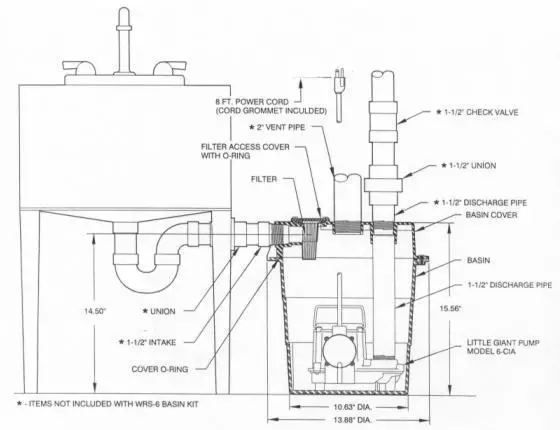
Many things in life require patience and attention to detail and plumbing is one. We recommend you follow our recommendations when setting up the pump for your sink in the basement. Last, you want is to make the wrong hole, slip in the inappropriate valve in the wall, and secure it with Teflon tape. Hot water running through the faucet needs proper vent line so that air doesn’t stay in the room.
Take accurate measurements
Get your measuring tape and mark the precise size of the sinkhole. You also need to measure the pipe from the pipeline that goes from the sewer to the pipes. You will know how deep the pipe has to go. You need to buy the correct pipe length and auger the drainpipe accordingly.
Remove the sink and prepare the area
If there’s a drain opening in the basement, you will need to remove it entirely for the draining pump. Continue with unlocking the water supply pipe from the check valve and see where the drain pipe’s located. Use a crescent wrench or a wrench to do it.
Will you use dual pipes attached?
Some homeowners prefer using dual pipes attached. If so, you have to give the instructions a good read. Otherwise, you risk altering the line connected to the sink. Some homeowners like both kinds of setups, sothey use the most efficient under-sink pump in the basement. That’s why it’s essential to select the best pump for the basement sink (or in a landry room)– details on how to find the best pump come below.
Measure the sink’s depth
You need to buy an adequate pipe length to know how deep the sink will go. Many homeowners mistake placing it deep enough for a proper sink drain but not located deep enough to drain the water completely. Therefore, the drainpipe should be at least three times as long as the sink’s depth.
Run the pipe through the drain
Once you have the proper line, you have to slip it through the drain and connect it to the fitting on the sink’s top. Afterward, you will be able to join the pump’s bottom to the pipe that connects to the drain. Galvanized steel is the material most frequently used for the fittings, even if many are made of PVC. Should you go with fittings made of plastic or other materials, you need to be 100% sure that the fitting is made for the material– otherwise, it will cause damage. PVC is often used for valves as it’s reliable.
Get a high-quality water pump
For smooth and fast flow, you need an efficient discharge port, a quality sink pump, a good faucet, etc. The water pump will cost you around $35 and save you money in the long run. Most models feature automatic shut-off for best performance.
The drain pumps are excellent at lowering the risk of water loss. However, you have to learn to read the gauge to make sure you get the proper size pump for your basement sink. Don’t rush into buying the first pump you see on the shelf. Do due diligence before you make your purchase.
What if the basement has no floor drain?
Even if you don’t have a floor drain, you can still have a sink in the basement. As a matter of fact, there are methods to install drains in a basement without a solid slab floor and no sink. You need some skills and patience to get it right.
Above floor pumps
You can opt for an above-ground water pump for the basement sink. It’s a small pump unit that you place on the basement floor. The tapped unit will pump water into the existing drainage pipes of your house. Such models are less than two cubic feet and have the power to manage wastewater from your laundry sink in the basement.
Installing it is straightforward and you place the pump on the floor, next to the laundry sink. Attach the sink’s discharge pipe to the pump’s intake first and the outlet from the pump to the wastewater pipe second. Use a PVC t-joint for the connection. Once the pump is installed, you need to connect it to an outlet and run it accordingly.
Exterior Drain Line
If the basement has access to exterior drain pipe underneath the floor, you can install a drain pipe from the laundry sink to the drain line outside. You will need to remove a part of the wall, so this option is possible only with a walk-out basement. Continue with attaching the new drain lines to the exterior wastewater pipeline. You need to make the connection with a T-joint. If you don’t have access to the wastewater drain line, you won’t use this method.
Sump Pump
another possibility is to set up an external sump pump/storage tank under the basement. You can use an ejector pump to divert wastewater to the current draining lines. This sort of pump can also manage solid waste. If plan to install a basement bathroom and a washer, this method is the most suitable. The sump and sewage ejector will also remove the solid waste from the sink drain and the bathroom. You need to direct the discharge port to the sump storage tank through a draining pipe. Use some Teflon tape to keep it all tight. It’s necessary to rout it to the outside of the house where you have the sump. Needless to say, you will need access to the house’s exterior from the basement.
What to consider when selecting the draining pump for your basement sink?
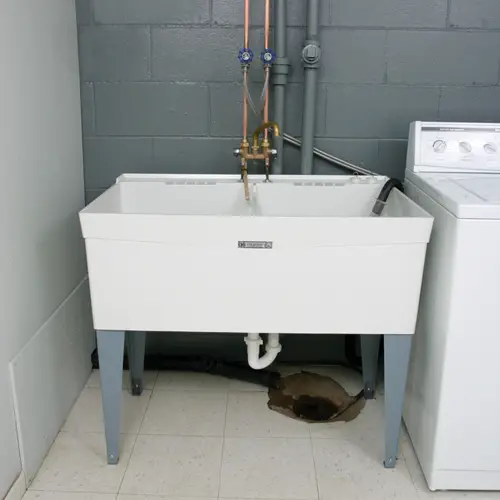
Even if the draining pumps aren’t expensive, you should still be wise when buying them. Here are some aspects to consider when cruising your options.
Built quality and material
You don’t want to install a pump that breaks or rusts long before its time. Look for a pump made of solid material (PVC is one) and takes intense use. A pump made of stainless steel housing is a wise option, as it’s durable and efficient, especially when installed in the perfect spot. Most of the time, people have to attach the pumps in damp places, so the risk of becoming rusted and clogged is high.
Water transfer capacity
The water transfer capacity is one of the main aspects to consider when buying a pump. If the pump drains the water in many hours, a slow transfer capacity is a cause. Always pick a pump according to the place you will set it up. If you set up the pump under a standard sink or in the laundry, a high-water transfer capacity pump won’t be mandatory. For other placements in the house, you will need to plug in a pump that transfers the water fast and easily.
Debris filtration
The draining pump should have debris filtration so that it will trap all the chunks of stones and sand that could be found in the water. Cheap pumps don’t come with debris filtration and will eventually clog. The tap water will stop and as the debris filter will trap the dust for a smooth water flow.
Effortless switching on/off
We recommend you pick a pump that is easy to turn on/off– ideally through a switch. You don’t want to make an extra effort to use the pump. Look for a handy drain pump with user-friendly controls.
Warranty
Any product with a warranty means that its manufacturer stands behind its product. Always give the warranty card a read and the instructions as well. You don’t want to void the warranty due to poor installation or something similar.
